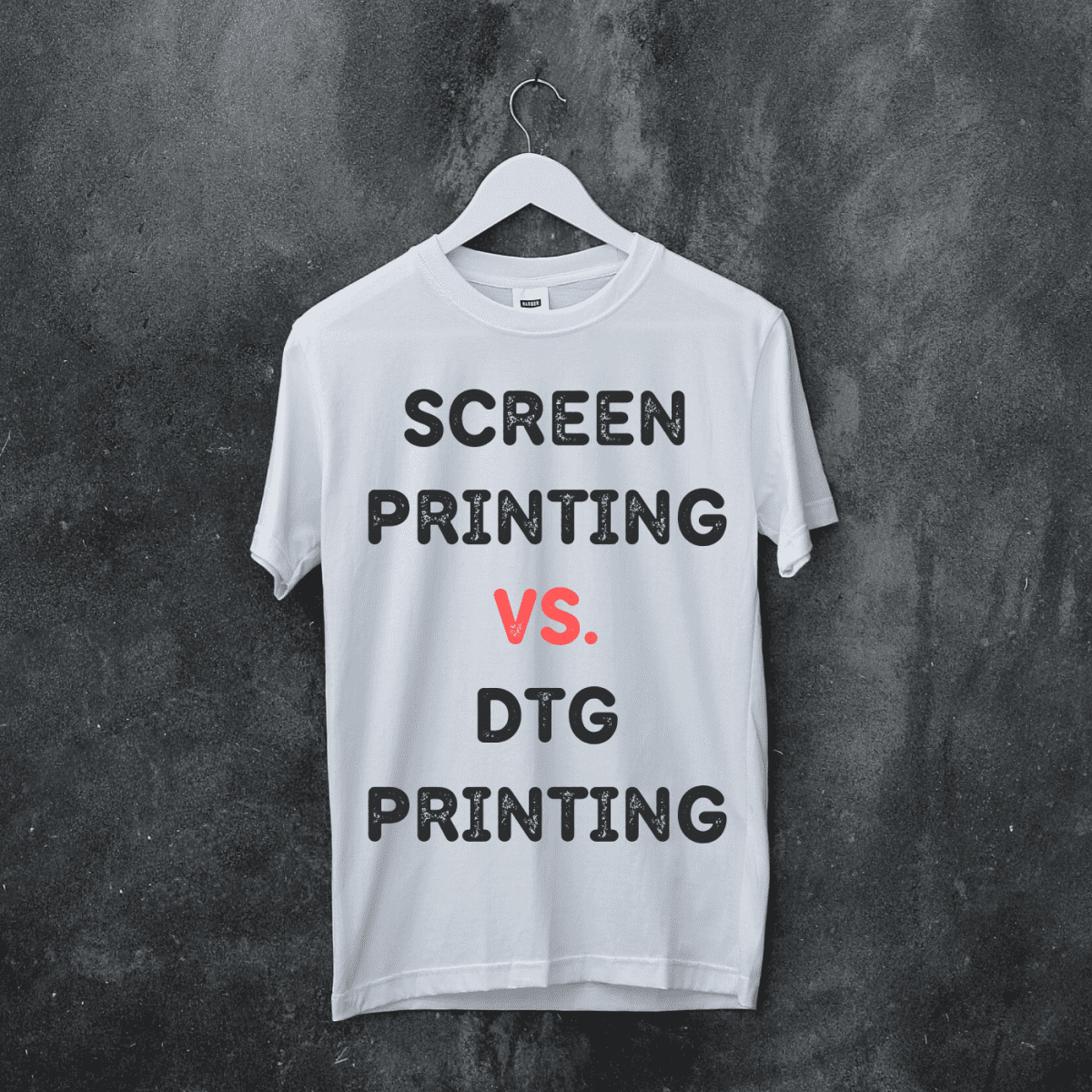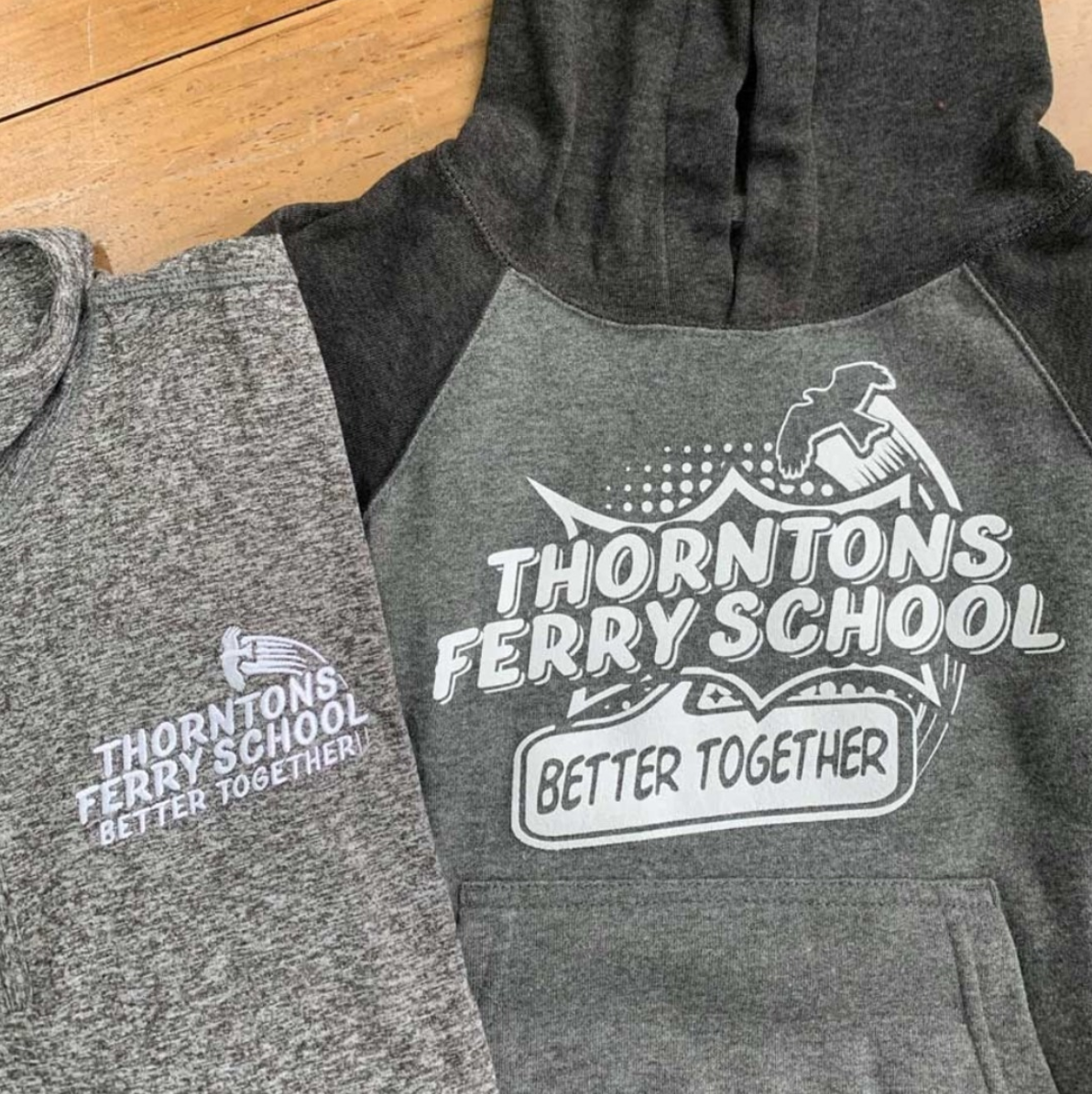Rumored Buzz on Tx Tees
Rumored Buzz on Tx Tees
Blog Article
Unknown Facts About Tx Tees
Table of ContentsOur Tx Tees IdeasOur Tx Tees DiariesA Biased View of Tx TeesMore About Tx TeesTx Tees Things To Know Before You BuySome Known Incorrect Statements About Tx Tees The Main Principles Of Tx Tees
That brings your overall to around $1,900 prior to tax obligation and delivery. Accumulate other prices, like the variety of utilities it takes to run the shop and the price of ink and solution per design. t-shirt printing. Take the print listed below as an example. This is a one-color picture, so the expense of ink per t-shirt is roughly 20 cents.The solution needs to only be a few cents because you 'd only need to coat one screen for this task. Normally, printers try to make up to 45% revenue on a print work.

With DTF, you can publish a handful of t shirts, or simply one. Utilize the same calculator as the area over to determine just how much profit you would certainly use DTF transfers. Contrast the expenses and revenues to whichever method speaks best to your arrangement and procedure. Both display printing and DTF have their specific niches on the planet.
Not known Factual Statements About Tx Tees
The best means to understand? Ask about and see what printing shop like yours are doing. custom t-shirt design. Attempt both out and see which you like better
When you're selecting what sort of printing technique to make use of for printing your artwork styles on your garments, it is necessary that you understand the distinctions in between these 2 strategies so you can maximize results while lessening prices. Display printing is one of the most typically utilized method for publishing designs on fabrics.
DTG printing is also called area or direct to garment printing due to the fact that it prints only what is needed as opposed to making a screen as screen printers do. https://www.openlearning.com/u/russellcostello-sb08ce/. Screen printing works by display filler squeegee screen printing ink display mesh screen, after that moving the image to garment making use of warm and/or stress
The DTG printer uses special dye-sublimation inks that are used into a pre-designed picture by a digital printing system. The inks enter into the fabric, enabling lively colors and extraordinary detail. It's likewise called place or straight to garment printing since it prints just what is required rather than making a display as screen printers do.
Some Of Tx Tees
It's much quicker - you can publish a fullcolor image in minutes, as opposed to hours for screen printing. Second, there's no set up time or prices involved - you can publish any type of layout you such as, without having to develop a screen first. Third, there's no waste - because screen printers screen print one design at a time, they need to evaluate each shade independently.
The paper is very pricey and can only be made use of once. Once it's printed on, it needs to be disposed of. - The preliminary acquisition cost is reduced than the in advance financial investment of DTG printers- You can publish multi-color layouts one display at once rather than having to print each color separately like DTG printing.

A Biased View of Tx Tees
Rather of using screen mesh as display printers do, dye sublimation printers use laser innovation to transfer your pictures onto garments or paper. A warm procedure moves the color from its solid-state directly right into the gas stage which subsequently integrates it onto textile substratums when they are quickly heated to high temperature levels under high stress.
Sublimation printing is green. It uses less water than screenprinting, and since it does not involve the usage of dangerous solvents, it's safe for all types of garments. The dye sublimation inks are additionally odorless when cured, unlike display printers that utilize harmful chemicals throughout the screen printing procedure that leave an unpleasant odor.
They likewise conserve cash on expensive devices like direct exposure devices given that dye sublimation printers don't call for a UV direct exposure unit or a flash treatment oven that is usually utilized in screen printing (custom monograming). What is straight to garment printing (DTG Printing)? DTG printing is an electronic screenprinting process that prints straight onto fabric utilizing specialized inkjet printers
The 5-Minute Rule for Tx Tees
DTG printing uses many advantages over standard screenprinting, including the ability to print photo quality images, better shade vibrancy, and the ability to publish designs on darker fabrics. DTG printers work by heating up the fabric ink until it turns right into a gas. The gas after that penetrates the material, bonding with the fibers to create a permanent print.

Screen printers just prepare their display then begin printing up until they lack item or ink.- There is a vast array of knowledgeable screen printers all over the globe, which can be helpful for beginners. - It's a slower procedure - display printers typically have to wait on the ink to completely dry before they can print the following shade- Display printers need hand-operated labor, so there's a greater understanding curve and it takes longer to generate a high-grade design- Screen printing isn't as exact as DTG printing, go to website so you might get some "blood loss" of shades from one part of the picture onto one more otherwise done appropriately.
Unknown Facts About Tx Tees
Nevertheless, rather of utilizing display mesh as display printers do, color sublimation printers utilize laser modern technology to move your pictures onto garments or paper. A warmth process transfers the color from its solid-state straight into the gas stage which in turn fuses it onto textile substrates when they are quickly warmed to high temperature levels under high pressure.
Sublimation printing is green. It utilizes less water than screenprinting, and due to the fact that it does not involve using damaging solvents, it's secure for all sorts of clothing. The dye sublimation inks are additionally odor free when treated, unlike screen printers that use hazardous chemicals during the screen printing procedure that leave an unpleasant smell.
They additionally save cash on costly tools like exposure units given that color sublimation printers do not need a UV direct exposure unit or a flash cure oven that is typically utilized in display printing. What is straight to garment printing (DTG Printing)? DTG printing is an electronic screenprinting process that prints directly onto fabric utilizing specialized inkjet printers.
How Tx Tees can Save You Time, Stress, and Money.
DTG printing offers several advantages over typical screenprinting, consisting of the capability to publish photographic top quality photos, better shade vibrancy, and the capability to print designs on darker textiles. DTG printers function by heating up the textile ink until it turns into a gas. The gas after that permeates the fabric, bonding with the fibers to develop a long-term print.
Report this page